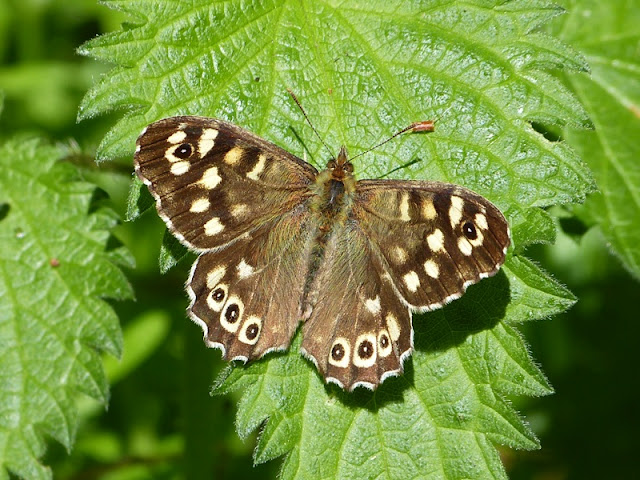In previous posts I have described how Speckled Woods and Wall Browns have arrived in East Lothian over the last few years and then colonised the whole county.
They both worked their way up the east coast from Berwickshire, skirting around the Lammermuir Hills, which run along the south of East Lothian. This seems like an obvious route, taking advantage of the milder climate along the coast and avoiding higher slightly baron hills.
It does appear that the Lammermuir Hills, with a maximum elevation of only 535 metres, is quite a barrier for butterflies as they expand their range.
Speckled Woods were first recorded in East Lothian in 2009 right on the south east corner of East Lothian at Dunglass. A year later Wall Browns were discovered in the same location and both species spread around the coast and have also used river valleys as they have colonised the county.
When Large Skippers were also found at Dunglass in 2014 we all expected them to follow the same route, but we were disappointed not to find them further along the coast over the next few years. Instead, the odd record came in suggesting that they had followed the foothills of the Lammermuirs westwards. This summer they were found in good numbers at Levenhall Links, which is on the extreme west of East Lothian. So, it seems that they chose a completely different route across the county.
Of course, Large Skippers are not easy to spot as they whizz about between flowers and maybe they are under-recorded as a result.
It is interesting, then, that Small Skippers were first recorded in East Lothian between Aberlady and Gullane in 2011. They had been recorded previously in the Borders, but hadn’t been spotted anywhere in East Lothian. Over the years more records came in and we have watched them spread east and west along the coast. There were some early records from some woodland south of Aberlady and also up in the Lammermuir Hills at Linn Dean.
It would appear that these little guys took a completely different route into East Lothian and came over the Lammermuirs via Soutra. It is no coincidence that the two main roads coming north into East Lothian are the A1 which follows the coast and the A68 which comes up over Soutra. The highest point of the A68 at Soutra is 364 metres above sea level, so still a bit of a climb, but the lowest point away from the coast.
Last year we moved to the Yarrow Valley in the Scottish Borders. Our house is between 30 and 40 miles from the coast as the crow (or butterfly) flies, but this short distance makes a surprising difference to the weather. We are at 175 metres above sea level, which isn’t that much, but the elevation and distance from the sea appears to have quite an impact on the weather. I can’t say that it is very noticeable, but the season here is at least three weeks behind what it is in more coastal areas.
It is noticeable in the spring that the Daffodils are at least three weeks later, but even later in the year my Buddleia flower at least three weeks behind those plants in our East Lothian garden, from which I took them as cuttings.
Although the summers appear to be just as hot, if not hotter than on the coast it is interesting that the shorter season means that Speckled Woods and Wall Browns, that are now so common in East Lothian, haven’t made it this far inland. However, the more adventurous Small and Large Skippers have both arrived here. It will be interesting to see what the next few years bring.









Interesting post Nick.
ReplyDeleteThank you Peter.
Deletebeautiful butterfly images.
ReplyDeleteI notice that the butterflies are slowing down a bit. Seems their first couple months here they move so fast I can never get a close look and the closer we get to autumn they spend more time on a flower. Might even get to photograph them.
The butterfly numbers are certainly reducing now. Some are furiously feeding to prepare for a long migration south or to see them through a long hibernation.
Delete